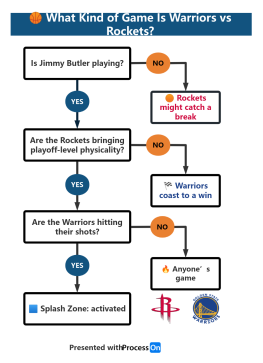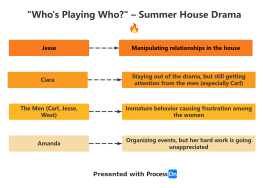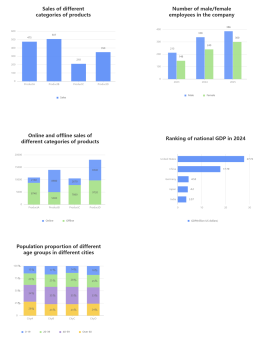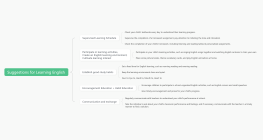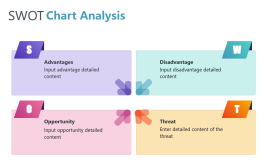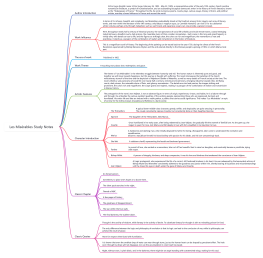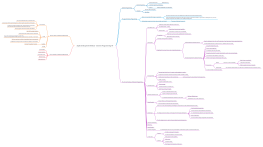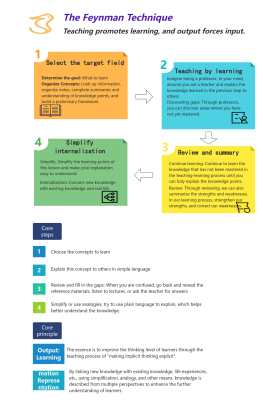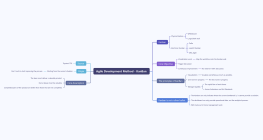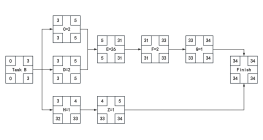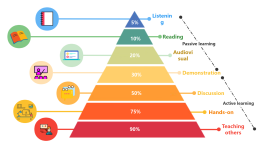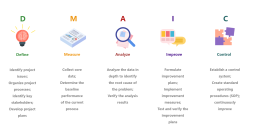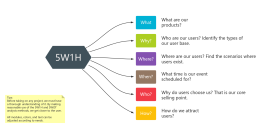Feynman Learning Method Notes
2024-09-26 10:56:31 164 0 Report 0
0
Login to view full content
This mind map serves as notes on the 'Feynman Learning Method,' a strategy for effective learning and comprehension. Named after the physicist Richard Feynman, this method emphasizes goal setting, teaching to learn, effective questioning, and systematic review. It advocates for specific, measurable, achievable, relevant, and time-bound goals while promoting active learning through teaching, questioning, and self-explanation. The notes also highlight the importance of organizing information, using mind maps, and drawing connections between new and known concepts. By simplifying complex ideas and integrating various knowledge points, this method enhances understanding and retention.
Other creations by the author
Outline/Content
Determine the goal
The significance of the goal
The learning goal exists to achieve learning outcomes, and the learning goal should have a certain connection with test scores.
Principles of Goal Setting
Specific
The goal should be specific, clear, and not vague, for example: studying hard is not a goal, but a state.
What is good study? How to measure the quality of learning?
What exactly does "study hard" refer to? How much should we study?
The result of studying hard is to what extent should we learn what subjects?
measurable
It should be based on facts or quantifiable.
For example, solving a problem completely, remembering all the formulas, as long as the goal is based on a fact that can be observed or tested, it means that the goal can be measured.
achievable
What can be achieved through efforts should not set goals that are too high or too low.
Relevant
To be helpful in achieving the ultimate vision or a larger goal, and there should be a certain degree of relevance between the multiple goals set by oneself.
with a definite deadline
In order to achieve the goal, we need to set a certain deadline.
Teaching to learn
Learn around the goal
1. Have a clear plan and arrangement
2.Learn with questions
3.Follow the 721 rule.
Mastering a skill requires 10% of the time to learn knowledge and information, 70% of the time to practice and implement, and 20% of the time to communicate and discuss with others.
4. Reduce invalid information sources
To avoid those information that are induced to be interesting but actually useless, fragmented, fast food style short videos.
5.Effectively expand learning resources
Ask experienced people (students and teachers)
2. Find a role model, observe how your classmates who excel in their studies learn.
Read books systematically.
Effective pre-study
1. Refer to the textbook, locate the key points and difficult points
2. Use mind maps to sort out knowledge points
Effective listening in class
Up and down strategy
Concentrate on listening carefully at the beginning and end, and if the content the teacher is talking about is very familiar to us during the transitional period, we can relax a little and then listen carefully again.
Maintain interactive strategy
Actively answering the teacher's questions, as well as having eye contact and conveying expressions with the teacher, are also important ways of interaction.
Overcome psychological barriers
1. Fear of public places (what you think is embarrassing, is not as important to others)
2. Afraid of not being noticed (feeling that you are not doing well in your studies and that the teacher doesn't know you, you can try introducing yourself before asking the teacher a question)
3. Afraid that the problem is too simple (the teacher is not afraid of simple problems, but is afraid that students don't think, when the problem looks really simple, you can tell the teacher about your thinking process and confusion)
4.Don't like the teacher
Effective Questioning Strategies
1. Prepare for the work (list the questions)
2. Make an appointment with the teacher
3.Stay focused during the questioning process.
Follow the teacher's line of thinking
When the teacher conducts a written analysis, they must use the paper they have prepared themselves.
4.Review later
Compare your own thoughts with your teacher's, find out the differences and analyze them.
Ask others for advice
Group seminar
Ask the teacher for advice
Seek advice from excellent students
Output:
Talk to myself
Mental rehearsal
Build your own knowledge mind map (review knowledge, review mistakes, summarize knowledge)
Talk to yourself and the world
Be a little teacher for my classmates
Share knowledge with your family
Share knowledge with the doll
break them one by one
Find the problem
After the previous two rounds of steps and outputs, you may find that the reason why you haven't mastered the knowledge may be multifaceted.
1.Memory problem (I didn't remember it myself)
2. Understand the problem (not really understanding the knowledge)
3.Vision problem (knowledge boundary has not been opened)
Systematic review
1.Homework review
2.Summary and Review
After class, summarize the knowledge from the previous lesson.
Seize the moment, spend two minutes summarizing, actively understand your mastery of the course, summarize it if you can't, and ask your classmates and teachers immediately.
Before going to bed, summarize what you have learned that day.
Summarize the knowledge learned during the day half an hour before going to bed.
Scattered knowledge, copy it on paper in advance, review it before going to bed
3.Card drawing review
Categorize and organize knowledge
Fragmented time memory
4.Review of the Table of Contents
Big blocks of time to organize memory
Concepts, properties, formulas, then narrate and write them down, and finally compare them with the textbook.
Correct use of mind maps
misconception
1. Mind maps should be drawn beautifully
2. Copy the mind map of excellent classmates
3. There's no need to use software
4.Just copy the directory
5.Too complicated
The right way
Each mind map should be tailor-made and suitable for oneself. Drawing just for the sake of drawing is just a waste of time.
Using the Feynman learning method to draw a mind map, it should be clear and concise, reflecting the overall structure of a knowledge point, and we should be able to summarize the meaning of this structure in one sentence.
Build knowledge network
Principle:
Learning is all about building this network, and building the network is a long-term process. We actively engage in a lot of practice and preliminary understanding in order to accelerate this process and make learning more efficient.
1. A lot of practice (mastering new knowledge and new methods require a lot of practice, to be familiar with new knowledge and learn to connect with old knowledge)
2. Get ahead of the curve (no knowledge point is isolated, get ahead of new knowledge points based on existing ones)
3.Reflection and Summary (Through understanding and paraphrasing the learned knowledge, and then locating blind spots in the paraphrased content, find out your weak knowledge points)
Effectively organize your notebook
The importance of organizing notes
Taking notes very quickly, but not remembering what to record
The 24 hours after class are the peak period of forgetting, during which time 70% of the content will be forgotten, even if reviewing reduces forgetting.
The brain is better at recording organized content, compared to textbooks, notes are a summary of class content, with stronger organization.
The teacher's explanation will incorporate elements such as gestures, language, and expressions, and taking notes will automatically combine these elements with knowledge, transforming simple knowledge memory into experiential memory, which is stored in the brain for a longer time.
Avoid turning note-taking into copying textbooks, or there will be no effect at all.
Misconceptions in Taking Notes
1. Rewrite the notes
2. Fill the paper with notes. Notes are a supplement to textbooks, not a substitute for them. When reviewing, you will be most efficient if you compare the textbook with your notes.
3. Notes only record new content, and you can add closely related old content appropriately.
Principles of Note-taking
1. No procrastination (organize notes on the same day)
2. Add, delete, modify, and query (supplement for abbreviations, discard those in the textbook and unimportant ones), ensure completeness, conciseness, and correctness.
3.Layered numbering (sort and arrange according to the outline)
4.Categorized copywriting (different types of color marking)
Effective use of error notebook
Misconceptions about wrong question book
1. Organize the wrong question book beautifully
2. Put the wrong question book on the shelf (learn to compress the wrong question book)
3.Trying to use software
Organizing mistakes on paper helps to deepen memory.
Summarize, organize, and compress.
Use a loose-leaf notebook
Effective use of reference books
Focus on one reference book (not in quantity, but in effectiveness)
First, read the textbook, then the reference book (be sure to follow the outline)
3. Master the ideas and practice similar questions (first analyze the typical examples given in the teacher's textbook, and then find similar questions in the reference book to practice)
4. Take notes, deep processing (find a problem, solve a problem, avoid making the same mistake)
5.Summarize and review, deepen understanding (textbook, notes, teaching aids, analyze the similarities and differences, deepen the understanding of core knowledge)
Improve learning efficiency
Principle: Avoid interrupting the working memory of the brain's thinking by trivial matters, affecting concentration.
1. Place items in fixed positions (place notebooks, textbooks, stationery and other items in fixed positions)
2. Record what's happening at any time (always carry a notebook, record homework content, activity arrangements, avoid emotional fluctuations due to forgetting, and improve logical thinking)
3. Create a calendar and to-do list (course schedule, plan, learning goals)
Attitude towards learning
The essence of learning:
Learn "based on the relevant knowledge of the problem to be solved"
Xi "Deep thinking and application ability of knowledge"
In-depth thinking and application of knowledge is a difficult task, which requires the joint effects of time, space, fragmented knowledge, and knowledge system.
Reading ability three types of books
1.Teaching Reference Books (Combined with Learning Progress Synchronous Reading)
Teaching suggestions, teaching objectives, textbook analysis, background knowledge
Preview: Understand the key points and difficulties of knowledge in advance
Review: Check if you have mastered the relevant knowledge.
2. Discipline popular science books (reading in advance can maximize their effect)
Understand the background knowledge and related stories of each subject.
Background knowledge: Eliminate the strangeness of formal learning and reduce the difficulty of learning.
Related story: Adding fun to knowledge points
3.Literary classics (long-term reading, gradual benefits)
A crucial way to improve reading and writing skills
Need long-term reading and gradual accumulation
Speak in a way that people can understand.
integrate
Combine the already understood basic knowledge points.
Combine the previous knowledge points with this.
Simplify
It's something others don't understand when you say it.
If you can't explain something in simple terms, it means you don't understand it well enough.
No professional terms or jargon
In simple words
In your own words
Exceptions where simplification is not possible
Financial industry
insurance
Finance and Accounting
Legal profession
lawyer
Legal Affairs
Give examples
Connect with specific examples and give examples repeatedly
Positive Example: Specific Examples
Counterexample: Practice critical thinking through counterexamples
make an analogy
Analogy
Find what everyone knows
simpler/more concrete and vivid
advantage
Reduce cognitive cost
Discover the connection (underlying logic)
Discover the essence of similarity
rather than formal similarity
Understand the unknown with what is known.
Advance with certainty amidst uncertainty
Seek certainty in uncertainty
Understand the abstract with specifics.
From knowledge points to knowledge trees
From Knowledge System to Knowledge Tree
Understand complexity with simplicity.
Explain coronary heart disease, using the example of a clogged sewer
Familiarize yourself with the unfamiliar.
notes
Knowledge
experience

Collect
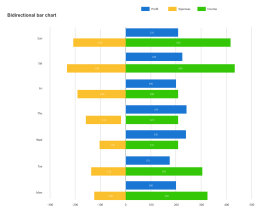
Collect
0 Comments
Next page
Recommended for you
More

